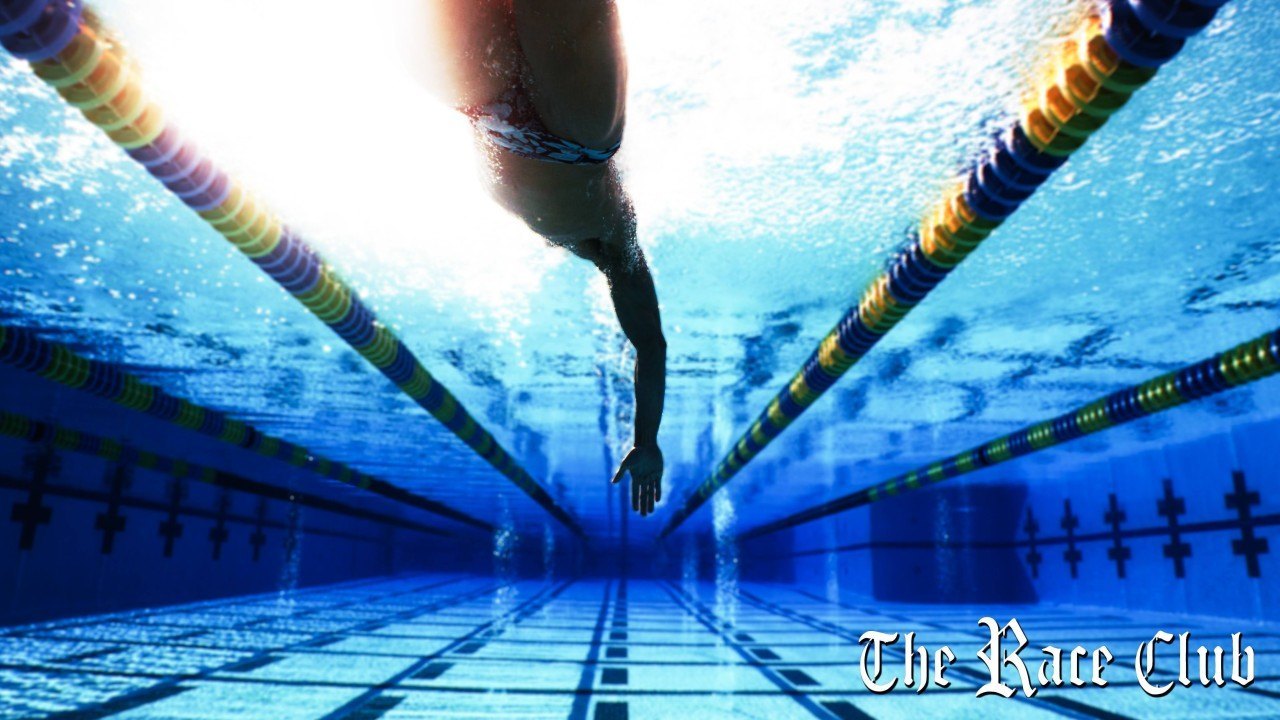Courtesy of Gary Hall Sr., 10-time World Record Holder, 3-time Olympian, 1976 Olympic Games US Flagbearer and The Race Club co-founder.
Once we understand how important it is to obey the law of inertia in the water, how do we really know if we are?
Each of the four strokes demonstrates peaks and troughs of our body’s speed during the stroke cycle. In freestyle and backstroke, there is a right arm peak and trough speed and a left arm peak and trough speed. In fly there is a peak for the first down kick, which occurs while the hands are pulling underwater, and a peak for the second down kick, when the hands are recovering over the water. In between each peak is a trough. In breaststroke, there is a kick and pull peak and a trough that follows each.
At The Race Club, through the technology of the velocity meter, we measure a swimmer’s velocity, acceleration and deceleration at all times throughout several stroke cycles. It enables us to identify and quantify all of the peak and trough speeds. When synchronized with video, it also enables us to identify stroke deficiencies, such as poor kicking or pulling motions or head and body position that magnify the differences between peak and trough speeds. The velocity meter enables us to make corrections in technique that we could never identify from the deck nor from an underwater window without also understanding the impact they have on body speed.
After performing many of these studies on great and not-so-great swimmers, we have come to appreciate what the ‘desirable values’ are for the differences between peak and trough speeds in each of the four strokes.
Backstroke is the most conforming stroke with a difference between peak and trough speed on each arm of .35 meters per second or less considered to be very good. In freestyle, the difference between peak and trough speeds for each arm should be .5 meters per second or less. In fly, we often see a difference range of 1 to 1.5 meters per second or more between the peak and trough speeds. In breaststroke, since we are starting from nearly a dead stop before beginning each kick and the kick provides the majority of propulsive forces, we want to see a big increase in speed, or a large difference between peak and trough after the kick. Breaststroke is analogous to doing a standing dunk under the basketball net.
Certainly in freestyle and backstroke, minimizing the difference between peak and trough speeds conforms to the law of inertia and makes us more efficient swimmers. The question is how do we do that?
In both strokes, there are really only three things we can do to conform to inertia. First, sustain a steady six-beat kick. Second, increase the stroke rate, which lessens the ‘down time’ of our pulling propulsion. Third, reduce frontal drag in all aspects possible; better head and body position, proper elbow bend and arm position and a tighter kick. For example, in a study of my freestyle pull (no kick involved), I found that in the three tenths of a second between the peak and trough velocities of each hand, the deep arm pull caused a 40% drop in body speed due to increased frontal drag versus a 25-30% drop in speed with the high elbow pull (less frontal drag). The amount of work required to overcome a 10% difference in body speed on each and every pull is overwhelming.
The speed cannot be sustained for long with the deeper pulling motion.
For starts and turns, conforming to the law of inertia generally means not waiting too long to initiate the dolphin kicks off the wall or entry. Or it means keeping the kicks fast and tight and transitioning to flutter kick before the breakout….all designed to help sustain our speed.
In summary, don’t ignore Galileo’s discovery and Newton’s first law of motion. Inertia is vital to our success as swimmers. If we learn to conform to it, we might just win some races.
Yours in swimming,
Gary Sr.

Gary Hall, Sr., Technical Director and Head Coach of The Race Club (courtesy of TRC)
Like The Race Club on Facebook
Follow The Race Club on Instagram
Follow The Race Club on Twitter
Connect to The Race Club / Gary Hall Sr. on Linkedin
THE RACE CLUB
Because Life is Worth Swimming, our mission is to promote swimming through sport, lifelong enjoyment, and good health benefits. Our objective is for each member of and each participant in The Race Club to improve his or her swimming performances, health, and self-esteem through our educational programs, services and creativity. We strive to help each member of The Race Club overcome challenges and reach his or her individual life goals.
 The Race Club provides facilities, coaching, training, technical instruction, video, fitness and health programs for swimmers of all ages and abilities. Race Club swim camps are designed and tailored to satisfy each swimmer’s needs, whether one is trying to reach the Olympic Games or simply improve one’s fitness. Our programs are suitable for beginner swimmers, pleasure swimmers, fitness swimmers, USA swimming or YMCA swimmers, or triathletes; anyone who wants to improve swimming skills. All of our Race Club members share an enjoyment of being in the water and use swimming to stimulate a more active mind and body.
The Race Club provides facilities, coaching, training, technical instruction, video, fitness and health programs for swimmers of all ages and abilities. Race Club swim camps are designed and tailored to satisfy each swimmer’s needs, whether one is trying to reach the Olympic Games or simply improve one’s fitness. Our programs are suitable for beginner swimmers, pleasure swimmers, fitness swimmers, USA swimming or YMCA swimmers, or triathletes; anyone who wants to improve swimming skills. All of our Race Club members share an enjoyment of being in the water and use swimming to stimulate a more active mind and body.

